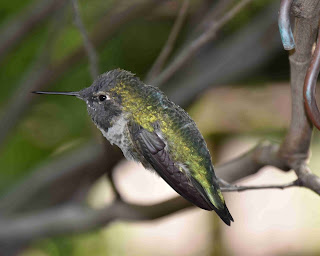In the morning we headed out to the Mission San Xavier del
Bac. The mission was founded in 1692 and the current church was begun in 1783
by a Franciscan priest by borrowing money from a local rancher and construction
stopped 14 years later leaving the building unfinished – missing a bell tower
and with some of the interior paintings not completed. Many of the builders and
artists who worked on it were from Mexico and downed tools and left once there
was no more pay. It was a very dangerous place to work and live, with Apache
raids contributing the most to the death toll in the region.
When Mexico won independence, in 1822, they confiscated
all Spanish missions and expelled all Spanish missionaries. From 1831 to about
1859 when the United States acquired the territory as part of the Gadsden
Purchase, San Xavier del Bac was without a priest. During this period, the local
Indians were caretakers of the mission and protected it from the Apaches.
In the 1950s some preservation attempts on the building went
disastrously wrong, with the outside coated with cement, which draws in water
and accelerated the decay of the masonry. The paintings and frescoes inside
were varnished and varnish turns black with age.
The church is now being meticulously restored, inside and
out, by artisans. The cement coating is being removed and replaced with the
original render, made of sand, lime and the sap of the prickly pear. The inside
is being carefully cleaned and the art restored.
The church is spectacular, with ornate paintings, statues
and artefacts. As a working church, there were many people lighting candles and
praying to their saints.
We then drove a few miles south to the Titan Missile Silos
on the I-19. The I-19 is an anomaly in the US in that it uses the metric
system, so all signs are marked in kms not miles. It was signed in 1980, when
the US had signed an Act to convert to metric. Sadly, it all proved to be too
hard and the Act was repealed in 82. The highway, though, has stuck with it
because of the expense in replacing 400 road signs.
The Titan Missile Site tour is amazing. This preserved Titan
II missile site, officially known as complex 571-7, is all that remains of the
54 Titan II missile sites that were on alert across the United States from 1963
to 1987.
The tour began with a short film about the site and the
history of the Cold War, then we donned hart hats and headed underground.
There was an elaborate security system, with codes that had
to be burned after use, sealed blast doors that could only be opened if every
other door was shut and so on. The entire underground complex was on springs,
so if an earthquake or a detonation hit, the complex was protected. Lots of
blast doors later, we were in the command centre. The guide ran a simulated
launch, with 2 keys that had to be turned simultaneously, alarms, and lights. The
entire process, from key turn to launch was only 58 seconds. It was very
sobering to imagine what the world would have been like if the launch had ever
occurred. The US had a defensive only policy, so they would only fire if fired
upon. The Titan II could deliver a nine megaton thermonuclear warhead to its
target more than 6300 miles (10,000 km) away in less than thirty minutes. The crew didn’t know where the missile would
go once launched, the targets are still a classified secret.

We then walked down a tunnel to the missile silo. When the
base was decommissioned the other silos were destroyed and left uncovered for
several months to allow the Soviets to confirm their destruction via satellite
pictures. This one has its launch doors locked open halfway and sealed off.
We were able to look inside the launch silo – 140 feet and 8
stories down, with the ICBM in place. The ICBMs were fuelled by a mix of
chemicals that self ignite on contact, hence the fast launch process. After
seeing the silo from the 3rd floor, we went back to the surface and
looked in from the top. It is a unique experience to get that close to something
that was a big part of history.
























































